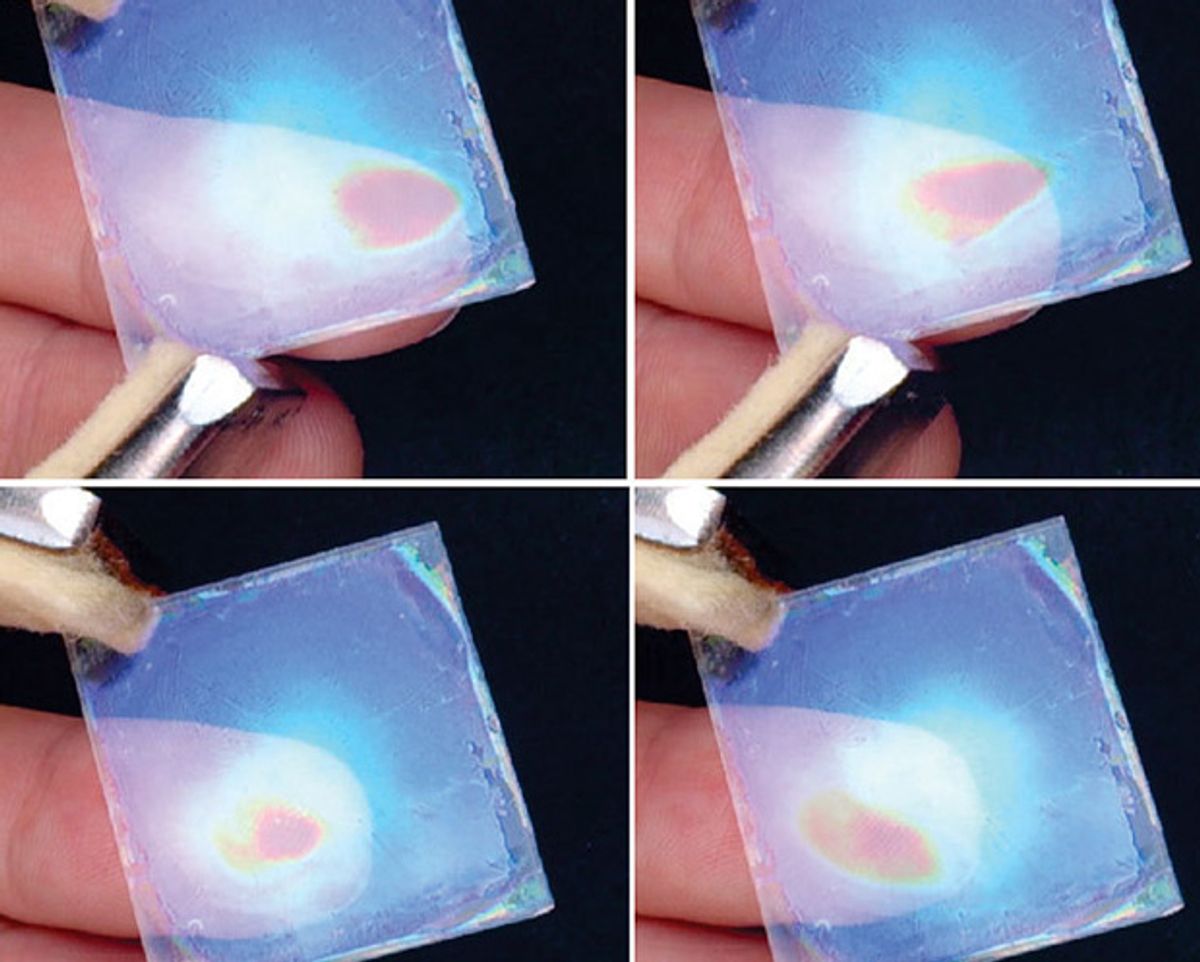In a world where the “swipe” has become a dominant computer interface method along with moving and clicking the mouse, the question becomes what’s next? For researchers at Stuttgart’s Max Planck Institute for Solid State Research and LMU Munich, Germany, the answer continues to be a swipe, but one in which you don’t actually need to touch the screen with your finger. Researchers call these no-contact computer screens touchless positioning interfaces (TPI).
In research published in the journal Advanced Materials, the Germany-based researchers have developed nanostructures capable of changing their electrical and optical properties when a finger passes by them. The resulting device could usher in a new generation of touchless displays.
While touchless displays raise the question of whether every finger that passes by a display’s surface is really intended to interface with the computer, the researchers believe this new interface will address the problems of mechanical wear suffered by today’s touch screens over time, as well as concerns over screens, especially at ATMs, being transmission vectors for viruses and bacteria.
Computer hardware analysts aren’t completely sold on whether touchless displays are really next step in computer interfaces. That debate notwithstanding, the technology that enables this approach is impressive. The researchers have developed what amounts to a humidity sensor that reacts to the minute amount of sweat on a finger and converts it to an electrical signal or a change in color of the nanostructured material.
The nanostructured material is made up of something called phosphatoantimonic acid, which takes up water molecules and swells considerably in the process. Not only does the material swell, but its electrical conductivity increases with each water molecule it absorbs.
While this clearly makes for a pretty dependable humidity sensor, the researchers were not looking to create just another moisture gauge, but a new approach to computer interfaces.
“Because these sensors react in a very local manner to any increase in moisture, it is quite conceivable that this sort of material with moisture-dependent properties could also be used for touchless displays and monitors,” said Pirmin Ganter, doctoral student at the Max Planck Institute and the Chemistry Department, in a press release.
To get the material to be more than just react to humidity, they took nanosheets of the material and combined them with a photonic nanostructure that reacts to the water by changing color. If this material were to be used in a display, the change in color would let the user know that the screen is recognizing the finger and its movement.
“The color of the nanostructure turns from blue to red when a finger gets near, for example. In this way, the color can be tuned through the whole of the visible spectrum depending on the amount of water vapor taken up,” explained Bettina Lotsch, one of the researchers, in the press release..
You can see how the color of the material changes as a finger passes near it in the video below.
While the color change is a helpful indicator that the user is, in fact, interacting with the display, the real merit of this technology over others like it is how quickly it reacts. Previous touchless interfaces could take seconds to respond to the near-miss finger swipe, but this technology responds in mere milliseconds.
The researchers are continuing to look at how they can improve the process for producing the material in order to bring down its costs. They’re also looking for a way to give it a protective coating to reduce wear that will occur because of incidental contact, while still maintaining its special properties.
Dexter Johnson is a contributing editor at IEEE Spectrum, with a focus on nanotechnology.



